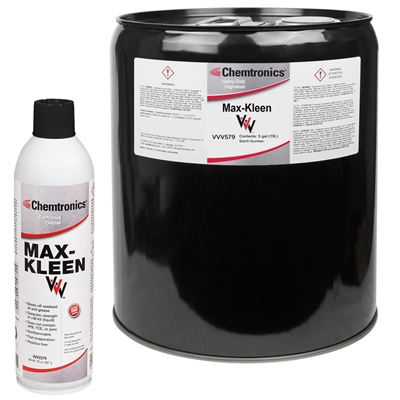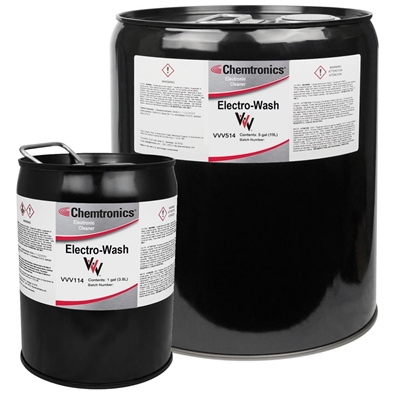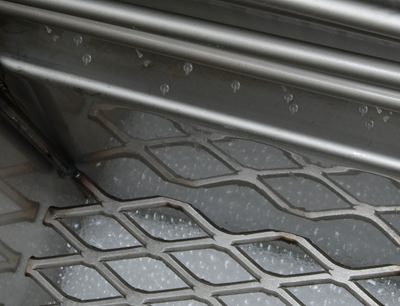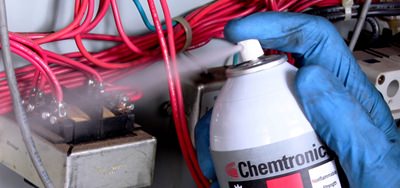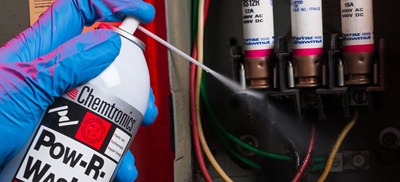Recently, U.S governmental agencies along with NGOs (non-governmental organizations) have filed allegations regarding the adverse human effects from the common solvent and degreaser 1-Bromopropane (1-BP). In August 2020, the United States Environmental Protection Agency (EPA) released the final Risk Evaluation document for the chemical, which could plant the seed for a series of potential lawsuits targeting industrial companies that use it within their product line [1]. 1-BP was originally linked to neuropathy and similar diseases, but it also seems to pose cancer risk and reproductive toxicity to workers repeatedly exposed to it. Formerly considered to be an effective substitute for ozone-depleting chlorofluorocarbons, the compound may now represent a bigger threat to employers than was thought.
What is 1-Bromopropane?
1-Bromopropane, also known as n-propyl bromide (or nPB), is a colorless organic liquid often employed as an industrial solvent to clean electronic, optic, ceramic, and metal parts. It has been extensively used in occupational settings, such as aerosol applications, adhesive spray, degreasing operations, asphalt fabrication, synthetic fiber production, and aircraft maintenance. In the workplace, exposure to 1-BP can happen via inhalation and dermal absorption, where low concentrations might cause minor headaches, numbing in hands and feet, and a drunk-like feeling side effect. However, prolonged exposure to higher levels has been associated with severe health damage, including weakness, poor coordination, loss of tactile sensation, inability to walk, and damage to the nervous system [2].
There are multiple ways in which nPB can negatively impact a company, including an increase in sick days taken, compensation claims, and chemical wound lawsuits. When employees experience detrimental health effects they will be unable to work, translating to both productivity- and revenue-loss. If the disease or symptoms persist, the company may be sued and be legally liable for compensations for all persons who have lost, or been affected in their ability to, work. Besides those potential multimillion-dollar settlements, the corporate image will be damaged along with potential business opportunities [3].
Toxicity Case Studies
Multiple case studies about the side effects of 1-BP have been reported throughout the years since it was first introduced into industrial processes in the late 90s. In most of those case studies, the concentration of the chemical in the air exceeded 100 ppm and workers were not wearing appropriate personal protective equipment (PPE). The table below presents, in chronological order, the most relevant incidents on the subject, including the activities performed by the workers, as well as the average levels of 1-BP in the air.
|
Case (Year) |
N° of Patients |
Symptoms |
Job Description |
Toxic Levels |
|
(1999) [4] |
1 |
Weakness of the lower extremities, numbness, dysphagia, peripheral neuropathy, and urinary difficulties |
Metal stripping involving a degreasing and cleaning agent |
2-month exposure, but not a specified concentration of 1-BP |
|
(2002) [5] |
3 |
Incontinence of urination, sore throat, dysphagia, stumbling, numbness in lower extremities, and general paresthesia |
Spraying glue to polyurethane foam parts in a cushion factory |
Less than 1-year exposure to an average of 133 ppm, with peaks of 261 ppm daily |
|
(2003) [6] |
16 |
Headache, anxiety, lightheadedness, nervousness, drunk feeling, standing difficulties, numbness, and paresthesia |
Foam fabrication, and adhesive spray operations |
Exposure to 18 – 254 ppm 1-BP with an average of 81.2 ppm |
|
(2004) [7] |
37 |
Neurological problems, depression, fatigue, limb muscle weakness |
1-Bromopropane production factory in China |
More than 2 years exposure to 1-BP, with 0.34 – 261 ppm |
|
(2006) [8] |
13 |
Symptoms were not reported, the main purpose was Br concentrations in different working zones |
Use of flexible foam spray adhesives in a seat cushion manufacturing company |
Around 92 ppm of 1-BP, with peaks of 200 ppm in the glue spraying zone |
|
(2007) [9] |
4 |
Paresthesia, bilateral distal extremity pain, weight loss, sensory loss, weakness, sore throat, fever, and spastic paraplegia |
Industrial glue for furniture adhesive |
Average exposure to 107 ppm after 9 months of work |
|
(2007) [10] |
6 |
Nausea, headache, dizziness, pain, lower extremity numbness, balance/walking problems, paresthesia |
Foam cushion gluers, in a furniture plant (70% 1-BP for the adhesive) |
30-40 hours per week, over 3 years, with an average of 130 ppm |
|
(2008) [11] |
2 |
Confusion, dizziness, nausea, dysarthria, ataxia, malaise, and paresthesia persisted for 1 year |
Degrease, spray, clean, drain, and submerge, electronic circuit boards |
3 years exposure to 178 ppm in the air sampling |
|
(2012) [12] |
1 |
Sensory ataxic neuropathy, mild weakness of the distal extremities, pain, temperature sensation, and gait disturbance |
Washing and wiping metal frames with a solvent solution |
18 months, working 9 hours per day on average (553 ppm) |
Table 1. Case Studies on 1-BP [13]
Later in 2013, another occupational incident raised concerns among governmental agencies when six workers of a Taiwanese golf-club cleaning factory started to develop neurological disorder symptoms. During a one-year timeframe, the personnel was assigned to wash golf clubs using an nPB-based product which resulted in progressive limb dysfunction and abnormal sensation in the skin. 1-Bromopropane was identified as the main cause for the poisoning in the workplace, along with the frequent power outages, exhaust fan malfunctions, and poor personal protection [14]. More recently, In November 2015, the National Toxicology Program classified 1-BP as “reasonably anticipated to be a human carcinogen”, on their 13th report on Carcinogens [15].
Safety Regulations Catch Up to The Risks
The carcinogenicity of this compound has only been studied in mice and rats, where tumor occurrences were common in female specimens who developed skin, intestine, and lung-related cancers. Health authorities concluded the animal experimentation produced sufficient evidence for the development of cancer from 1-Bromopropane exposure [16]. It has not yet been designated as a human carcinogen, but its current classification and health-threatening evidence should be concerns to employers. The EPA highly encourages organizations to provide rigorous PPE use habits and well-ventilated spaces to reduce exposure [17]. Keeping 1-BP air concentrations below 25 ppm will provide appropriate conditions for workers to mitigate health-degrading issues.
Regulations applicable to 1-Bromopropane include federal, state, and international laws that evaluate human health and environmental hazards. Regarding the Federal laws, the Toxic Substances Control Act (TSCA), the Clean Air Act (CAA), and the Occupational Safety and Health Act demand EPA to reinforce control actions for this compound. The EPA requires annual reporting by all companies where occupational users are exposed to 1-BP, and it has the authority to test, regulate, and reclassify the substance −if there are unreasonable risks to human health or the environment. On the other hand, state laws focus on managing the impacts of toxic substances, providing permits, controls, and benchmark limits for industrial facilities [18].
In the last few years, companies who import substantial amounts of 1-BP for their manufacturing operations have received formal Notices of Intent to Sue. These companies include Chemical Solvents, Unistar Chemical, First Continental International, Storchem, Solvents Company, Dow AgroSciences, and Murashu USA [19]. Although they exceeded the chemical’s importation threshold, no contact attempts or letter offerings have been made public yet. The consequences of the litigation intents have not taken long to appear and are already affecting some market segments that heavily rely on this solvent. In the United States, nPB consumption has decreased in the dry-cleaning industry from more than 170,000 pounds in 2011 to less than 3,500 pounds by 2020. As a result, the major supplier of n-propyl bromide solvents in the US market (ETI), announced the gradual elimination of 1-BP-based products for the dry-cleaning industry in 2020 [20].
Alternatives to 1-Bromopropane Based Degreasers
1-Bromopropane based degreasers have been popular for industrial cleaning applications because it quickly dissolves oils and greases, evaporates quickly, and has a relatively low cost. As regulations on 1-BP continue to tighten on the path to a full ban, Chemtronics continues to engineer alternatives with all the advantages of nPB, but without the health hazards.
Chemtronics Electro-Wash Tri-V Precision Cleaner and Max-Kleen Tri-V Head-duty Degreaser are nonflammable cleaners that quickly remove flux, grease, oils, dirt, dust, and other contaminants from electronic components, metal parts, tools, and assemblies. They remove all types of oil and grease while evaporating quickly and leaving no residues. Tri-V nPB replacement chemistry is an innovative chemistry that does not contain n-propyl bromide, TCE, hazardous air pollutants or ozone depleting compounds.
For more information, contact your Chemtronics application specialist at 770-424-4888 or [email protected].
References
[1] U.S. Environmental Protection Agency. “Final Risk Evaluation for 1-Bromopropane.” EPA, Environmental Protection Agency, https://www.epa.gov/assessing-and-managing-chemicals-under-tsca/final-risk-evaluation-1-bromopropane.
[2] OSHA. “What Is 1-Bromopropane?” 2014, https://www.osha.gov/sites/default/files/publications/OSHA_3676.pdf.
[3] Ecolink. “N-Propyl Bromide Health Effects: The Financial Impact for Companies.” Industrial Degreasers, 20 May 2020, https://ecolink.com/info/n-propyl-bromide-health-effects/.
[4] Sclar, Gary. “Encephalomyeloradiculoneuropathy Following Exposure to an Industrial Solvent.” Clinical Neurology and Neurosurgery, vol. 101, no. 3, 1999, pp. 199–202., https://doi.org/10.1016/s0303-8467(99)00034-7.
[5] Ichihara, Gaku, et al. “Neurological Disorders in Three Workers Exposed to 1‐Bromopropane.” Journal of Occupational Health, vol. 44, no. 1, 2002, pp. 1–7., https://doi.org/10.1539/joh.44.1.
[6] National Institute for Occupational Health and Safety. “NIOSH Health Hazard Evaluation Report: HETA No. 99-0260-2906.” NIOSH, 2003, https://www.cdc.gov/niosh/hhe/reports/pdfs/1999-0260-2906.pdf.
[7] Ichihara, Gaku, et al. “A Survey on Exposure Level, Health Status, and Biomarkers in Workers Exposed to 1-Bromopropane.” American Journal of Industrial Medicine, vol. 45, no. 1, 2004, pp. 63–75., https://doi.org/10.1002/ajim.10320.
[8] “Urinary Bromide and Breathing Zone Concentrations of 1-Bromopropane from Workers Exposed to Flexible Foam Spray Adhesives.” The Annals of Occupational Hygiene, 2006, https://doi.org/10.1093/annhyg/mel020.
[9] Raymond, Lawrence W., and Marsha D. Ford. “Severe Illness in Furniture Makers Using a New Glue: 1-Bromopropane Toxicity Confounded by Arsenic.” Journal of Occupational & Environmental Medicine, vol. 49, no. 9, 2007, pp. 1009–1019., https://doi.org/10.1097/jom.0b013e318145b616.
[10] Majersik, Jennifer Juhl, et al. “Severe Neurotoxicity Associated with Exposure to the Solvent 1-Bromopropane (N-Propyl Bromide).” Clinical Toxicology, vol. 45, no. 3, 2007, pp. 270–276., https://doi.org/10.1080/15563650701226218.
[11] Morbidity and Mortality Weekly Report. “Neurologic Illness Associated with Occupational Exposure to the Solvent 1-Bromopropane — New Jersey and Pennsylvania, 2007–2008.” Centers for Disease Control and Prevention, 2008, https://www.cdc.gov/mmwr/PDF/wk/mm5748.pdf.
[12] Samukawa, Makoto, et al. “A Case of Severe Neurotoxicity Associated with Exposure to 1-Bromopropane, an Alternative to Ozone-Depleting or Global-Warming Solvents.” Archives of Internal Medicine, vol. 172, no. 16, 2012, p. 1257., https://doi.org/10.1001/archinternmed.2012.3987.
[13] U.S. Environmental Protection Agency. Risk Evaluation for 1-Bromopropane (N-Propyl Bromide). Aug. 2020, https://www.epa.gov/sites/default/files/2020-08/documents/risk_evaluation_for_1-bromopropane_n-propyl_bromide.pdf.
[14] Wang, Te-Hao, et al. “Neurotoxicity Associated with Exposure to 1-Bromopropane in Golf-Club Cleansing Workers.” Clinical Toxicology, vol. 53, no. 8, 2015, pp. 823–826., https://doi.org/10.3109/15563650.2015.1064939.
[15] U.S. Environmental Protection Agency. “Addition of 1-Bromopropane.” EPA, Environmental Protection Agency, https://www.epa.gov/toxics-release-inventory-tri-program/addition-1-bromopropane.
[16] Stelljes, Mark, et al. “28-Day Somatic Gene Mutation Study of 1-Bromopropane in Female Big Blue® B6C3F1 Mice via Whole-Body Inhalation: Support for a Carcinogenic Threshold.” Regulatory Toxicology and Pharmacology, vol. 104, 2019, pp. 1–7., https://doi.org/10.1016/j.yrtph.2019.01.034.
[17] Chemtronics. n-Propyl Bromide (NPB) Determined Unacceptable Risk by EPA for Vapor Degreasing & Aerosols. 19 Aug. 2020, https://www.chemtronics.com/n-propyl-bromide-npb-determined-unacceptable-risk-by-epa-for-vapor-degreasing-aerosols.
[18] U.S. Environmental Protection Agency. “Final Risk Evaluation for 1-Bromopropane.” EPA, Environmental Protection Agency, https://www.epa.gov/assessing-and-managing-chemicals-under-tsca/final-risk-evaluation-1-bromopropane.
[19] CHEManager International. “NGOs to Sue US Companies over Solvent Imports.” CHEManager, 2017, https://www.chemanager-online.com/en/news-opinions/headlines/ngos-sue-us-companies-over-solvent-imports.
[20] Smith, Carr J, et al. “Use of 1-Bromopropane (N-Propyl Bromide) in Dry Cleaning Is Rare and Rapidly Declining toward Obsolescence.” Toxicology Research and Application, vol. 4, 2020, p. 239784732096696., https://doi.org/10.1177/2397847320966961.


